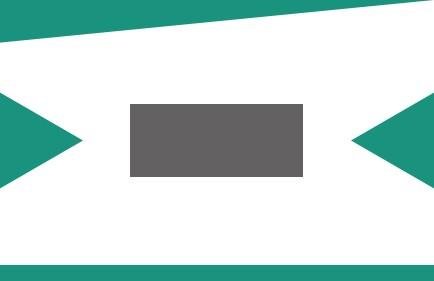Name Title







• General and very high-level description of what you do as a planner:
• Project types you have been involved in (possibly avoid mentioning any specific projects that could be politically charged discussion points)
• Types of people you interact with on a daily basis

• What you enjoy best about being a planner
• What attracted you to planning?
• How did you get into planning?
• Ask questions.

• Pay attention.
• Participate.
• Be respectful and professional towards other students.
• Be creative!
• Have fun!
Please take out your
As the Planner Sees It: Role Play packets.


Evaluate the problem and determine if any action is necessary.

Set some goals based on your evaluation.
Propose solutions to the problem.
v
Make a decision about what the city will do moving forward.
Write-up your plan!
• Elected officials – City council, County commission.
• Government Departments (Public Works, Utilities, Transportation, Wastewater, Stormwater, Parks and Rec, etc.)
• State and Federal agencies
• Developers
• Large property owners
• Builders
• Developers attorneys
• Private planning or development consultants
• Individuals
• Business owners
• Neighborhood Associations
• Non-profit organizations (environmental, social service, healthcare, etc.)
• Churches
• Schools




• Middle of all three spheres: Community Residents, Government, and Development Related Businesses.
• Facilitate communication between the three groups.
• Help residents develop and refine the community vision.
• The vision of the community is constantly changing, so planners must be nimble and continuously update and refine plans.
• Help government develop the policy and code to implement the vision.

• Work with developers to help them understand the policy and code to improve projects, so they match the community vision.

• Set the vision for the community.

• Let the planners know what they want for their community.

• Responsible for implementing the vision of the residents.
• Local government controls the adopted policy, code, and provides the budget.
• Creative governments can succeed at implementing a vision with a limited budget.


• These are the players who are on the ground building and putting the vision in place through development and redevelopment projects.




• Good planning solutions are based on data
• Data comes in many types:
• Maps
• Demographic Data
• Surveys



These maps are used in planning to help prevent things like urban sprawl.
How do you think maps are used in community planning?
• Decide where businesses go
• Decide what businesses go where
• Decide where nature preserves and parks go
• Plan transportation
• Decide where public services can go


How do you think maps are used in community planning?
• Decide where businesses go
• Decide what businesses go where
• Decide where nature preserves and parks go
These maps show concentrations of population density that can aid in decisions about infrastructure and things like highways to connect residents with areas of higher job concentration.
• Plan transportation
• Decide where public services can go


How do you think maps are used in community planning?
• Decide where businesses go
• Decide what businesses go where
• Decide where nature preserves and parks go
These maps help planners determine what’s on the ground and the surrounding uses.
• Plan transportation
• Decide where public services can go


How do you think maps are used in community planning?
• Decide where businesses go
• Decide what businesses go where
These maps help planners see what kinds of transportation are available in different areas.
• Decide where nature preserves and parks go
• Plan transportation
• Decide where public services can go


How do you think maps are used in community planning?
• Decide where businesses go
• Decide what businesses go where
These maps help planners see what kinds of transportation are available in different areas.
• Decide where nature preserves and parks go
• Plan transportation
• Decide where public services can go


How do you think maps are used in community planning?
• Decide where businesses go
• Decide what businesses go where
These maps help planners see what kinds of transportation are available in different areas.
• Decide where nature preserves and parks go
• Plan transportation
• Decide where public services can go


How do you think maps are used in community planning?
• Decide where businesses go
• Decide what businesses go where
These maps rate the health of roadways according to how congested that they become.
• Decide where nature preserves and parks go
• Plan transportation
Green – Healthy, low congestion
Yellow – Less healthy, congested
• Decide where public services can go
Red – Unhealthy, very congested


How do you think maps are used in community planning?
• Decide where businesses go
• Decide what businesses go where
• Decide where nature preserves and parks go
These depict intersections in the roadways that are in need of improvement. Those needing improvement are usually represented with a Red dot.
• Plan transportation
• Decide where public services can go


How do you think maps are used in community planning?
Common demographic data we use is population projections, ages, ethnicity, income, travel patterns, employment in specific industries.
• Decide where businesses go
• Decide what businesses go where
Population projections are the most important as they help us plan where and how communities will grow (or shrink) over the next decade or two. Help us plan for where to locate homes, schools, parks, roads, transit, etc.
• Decide where nature preserves and parks go
• Plan transportation
• Decide where public services can go


How do you think maps are used in community planning?
• Decide where businesses go
There are many types of surveys and formats for their distribution. They pose simple questions to gather data that can be used to indicate needs, opinions, and even evaluate. They can be used, for example, in deciding whether a community is willing to finance a project.
• Decide what businesses go where
• Decide where nature preserves and parks go
• Plan transportation
• Decide where public services can go

Step
Step 2: ANALYZE


• Analyze the data that you’ve collected.
• Collaborate with different stakeholders to find out what the data are telling you about the problem
• Use the maps and other data available to figure what the problem is and start getting an idea of what to do about it.



Step 1: COLLECT DATA

Step 2: ANALYZE
Step 3: SET GOALS


• Based on your analysis and understanding of the problem, think of goals (2-3).
• Talk among the other stakeholders (using your role play cards as a guide) to develop them.
• What do you want to happen?
• What are some milestones towards that vision?



Step 1: COLLECT DATA

Step 2: ANALYZE

Step 3: SET GOALS
Step 4: GENERATE CHOICES


• Talk among the other stakeholders (using your role play cards as a guide) to develop some choices based on your goals (1-3).
• You all have different views and objectives so it’s okay to have different options at this point.
• Be creative! In this role play, you are not limited by current technologies or practicality but try and have at least one option that is doable.



Step 1: COLLECT DATA

Step 2: ANALYZE

Step 3: SET GOALS

Step 4: GENERATE CHOICES

Step 5: MAKE A WRITTEN PLAN

• List the data you used
• Describe what your analysis told you
• Write down your goals
• Describe the choice your group made and why
• Include a graphic illustration of your solution (quick sketch)



Step 1: COLLECT DATA Step 2: ANALYZE


Step 3: SET GOALS

Step 4: GENERATE CHOICES

Step 5: MAKE A WRITTEN PLAN
Step 6:


• How long will it take?
• Can it be done all at once or should there be phases?
• What kinds of information might you need?
• $$$$$
• Who will build it?
• Who will manage it?
• Is it legal?
• What kind of follow up might be involved?



Step 1: COLLECT DATA Step 2: ANALYZE


Step 3: SET GOALS

Step 4: GENERATE CHOICES

Step 5: MAKE A WRITTEN PLAN

Step 6:



Your new project is approved and being built.
The community loves your solution and can’t wait to get this traffic moving!






Name Title Email Website (optional)

